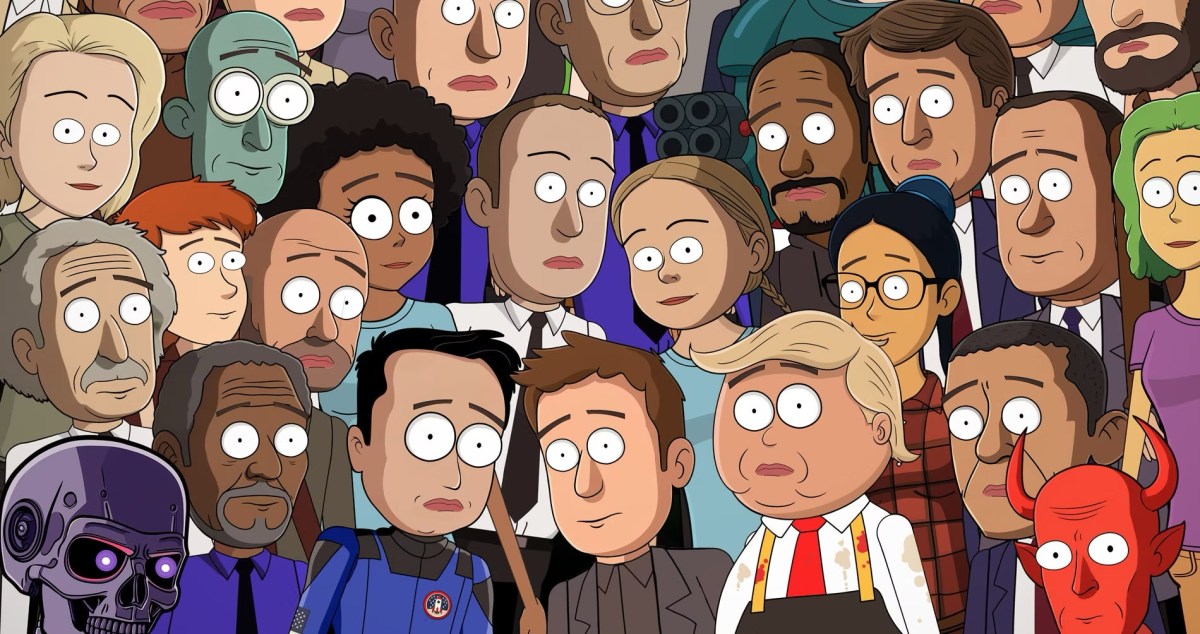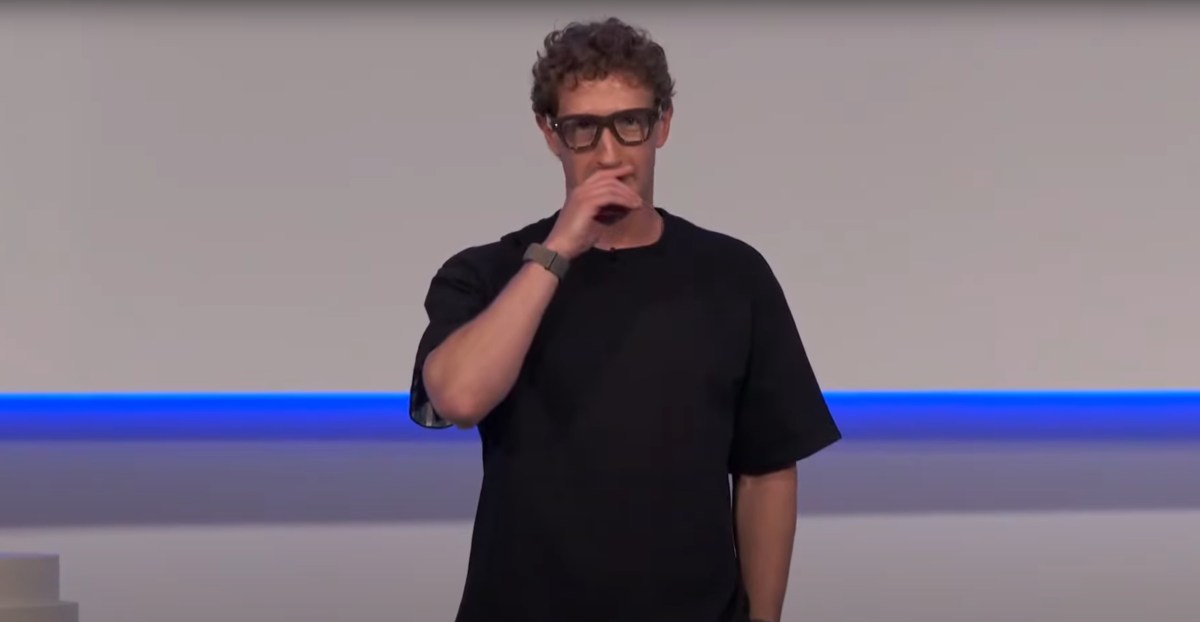
Showrunner founder vows to turn you into a happy little content prompter for the 'Netflix of AI'
Sources: https://www.theverge.com/ai-artificial-intelligence/762594/fable-showrunner-edwatch-saatchi-interview, The Verge AI
TL;DR
- Edward Saatchi’s Fable Showrunner aims to create an interactive, AI-driven content platform that could be the ‘Netflix of AI,’ letting users generate short animated scenes through prompts on a dedicated Discord server. The Verge
- The service is currently free, with plans to charge subscribers later—roughly $10–$20 per month—and discussions about licensing IP from major studios (e.g., Disney). The Verge
- Showrunner runs on a catalog of original programming and a model (SHOW-1) that can emulate styles like those in contained shows; output is created with AI and human artists, and even unlicensed clips (e.g., South Park-style) have been produced as experiments. The Verge
- The project is a pivot from Saatchi’s Oculus Story Studio background, embracing gen AI after Meta shuttered Story Studio in 2017; the goal is more dynamic, interactive entertainment rather than passive viewing. The Verge
- While acknowledging potential job displacement, Saatchi frames Showrunner as a supplement to traditional production, with plans to partner on branded IP models (e.g., The Mandalorian) rather than simply lowering costs. The Verge
Context and background
Edward Saatchi is a cofounder of Oculus Story Studio, a virtual reality initiative that earned an Emmy for one of its animated features but ultimately saw Meta shutter the studio in 2017 due to limited public interest in VR movies. This setback prompted a pivot toward generative AI as a new path for engaging audiences. The Verge’s interview traces how Saatchi’s experiences, including early experiments attempting to build a conversant character in a VR adaptation of wolves-in-the-walls, shaped Showrunner’s design goals: to move beyond “brain-in-a-jar” AI and toward living characters with simulated worlds. The Verge In its early form, Showrunner used to generate short clips on a platform conceptually tied to familiar IP, aiming to deliver output that resembles the look and feel of your chosen property without fully recreating it. One notable experiment involved using the SHOW-1 model to produce unlicensed South Park episodes, which highlighted both the potential and the limitations of AI-crafted humor and pacing. Saatchi emphasizes that such experiments demonstrated Showrunner’s viability as a service, even as they underscored the gap between machine-generated output and human-crafted storytelling. The Verge
What’s new
Showrunner’s current form sits on a Discord server where users select characters and art styles from a catalog and then write prompts detailing dialogue and interactions within a given environment. The system outputs short animated clips that match the aesthetics of preset shows like Exit Valley, a hybrid of Silicon Valley and Family Guy vibes, with voices designed to resemble the real-life figures they evoke. The platform is free today, with Fable planning to begin charging subscribers in the future—likely in the $10–$20 per month range. Industry interest has already surfaced in licensing IP from major studios, including Disney, to power Branded models that would enable fans to prompt scenes featuring established characters. The Verge The business model contemplates studios owning content generated with branded models trained on copyrighted IP, while users would pay to access the service. Saatchi stresses that the aim is not to substitute traditional productions but to augment them, offering a platform where audiences can actively participate in content creation. He notes that while AI will inevitably change jobs in creative fields, Showrunner’s value proposition lies in enabling new kinds of interactive experiences and scalable branding opportunities rather than cheapening output. The Verge
Why it matters (impact for developers/enterprises)
For developers and entertainment studios, Showrunner presents a potential pathway to harness generative AI for branded, interactive content. The approach—combining LLMs with human artists and a catalog-based prompting system—offers a framework for producing large volumes of scene-based material around licensed IP while preserving a human-in-the-loop aesthetic. Saatchi argues this is a new medium, not simply a cost-cutting tool, and envisions “playable” experiences that extend beyond traditional films and TV episodes. If studios embrace branded models, fans could generate scenes featuring characters from franchises like The Mandalorian, expanding the universe in ways that traditional media production does not easily permit. The Verge The tension between AI-powered efficiency and the value of human artistry remains central. Saatchi emphasizes collaboration with artists and animators to maintain quality and argues that a purely cheaper VFX paradigm would miss the point of AI as a new medium. For enterprises, the model implies a hybrid workflow where automated systems handle generation at scale, while human talent shapes the final look, feel, and narrative coherence of the output. This stance matters because it reframes AI as a partner in content creation rather than a substitute for creative labor. The Verge Showrunner’s IP licensing potential could unlock new revenue streams for studios and creators, enabling scalable experiments with established worlds and characters. The Mandalorian or other Disney-branded IPs, if licensed, could be explored through user prompts, with content ownership and monetization aligned with the rights holders’ models. This approach could also create a market for fan-generated, officially sanctioned extensions that stay within brand guidelines while expanding the universes fans love. The Verge
Technical details or Implementation
Showrunner operates on a combination of large language models and image/animation pipelines, guided by a catalog of original Fable content and branded models when licensed IP is involved. The SHOW-1 model was used in early experiments to emulate specific visual and sonic cues, including character voices and environmental cues, though Saatchi notes that the output tends to reveal its machine origin in places where human-crafted timing and dialogue chemistry would normally shine. The platform’s design deliberately prioritizes “simulation of a world” and interactive context for AI characters, moving beyond isolated dialogue to a broader, rule-driven sandbox environment. The Verge In practice, users on Discord generate clips by choosing characters, art styles, and prompts, then watch the AI-rendered scene unfold an “episode” at a time. The system’s current emphasis on original programming means output is grounded in Fable’s own catalog, with licensing discussions aimed at enabling users to prompt scenes featuring well-known IP. Saatchi’s long-term vision includes branded models that could unlock millions of new scenes or even feature-length projects informed by fan prompts, all while preserving narrative coherence through a hybrid workflow. The Verge
Key takeaways
- Showrunner is built as an interactive, AI-driven content platform anchored on a Discord prompt system.
- The service is free now, with anticipated subscription pricing and IP licensing partnerships on the horizon.
- It sits at the intersection of AI and traditional media work, combining LLMs with human artists to maintain quality.
- Licensing IP from major studios could enable branded models that power fan-generated scenes within established universes.
- Saatchi positions Showrunner as a new entertainment medium—playable and customizable—rather than a straightforward cost cutter.
FAQ
-
What is Showrunner and how does it work?
It’s a platform on Discord where users select characters and art styles, then write prompts to generate AI-created short animated clips that resemble a shown-up environment. The output is guided by original content and, in some cases, licensed IP via branded models. [The Verge](https://www.theverge.com/ai-artificial-intelligence/762594/fable-showrunner-edwatch-saatchi-interview)
-
Will Showrunner replace human artists?
Saatchi says the platform is meant to supplement traditional production, not replace it; the company emphasizes collaboration with human artists and animators to maintain quality. He also cautions against relying solely on cheaper VFX paradigms. [The Verge](https://www.theverge.com/ai-artificial-intelligence/762594/fable-showrunner-edwatch-saatchi-interview)
-
Can users work with licensed IP on the platform?
The goal is to enable licensing discussions with studios to power branded models (e.g., Star Wars content like The Mandalorian), allowing users to prompt scenes within those worlds; ownership and rights would be governed by licensing arrangements. [The Verge](https://www.theverge.com/ai-artificial-intelligence/762594/fable-showrunner-edwatch-saatchi-interview)
-
What is the business model and pricing?
The service is currently free, with plans to charge subscribers later—roughly $10–$20 per month. Pricing and licensing arrangements are subject to ongoing negotiations. [The Verge](https://www.theverge.com/ai-artificial-intelligence/762594/fable-showrunner-edwatch-saatchi-interview)
References
More news
First look at the Google Home app powered by Gemini
The Verge reports Google is updating the Google Home app to bring Gemini features, including an Ask Home search bar, a redesigned UI, and Gemini-driven controls for the home.
Meta’s failed Live AI smart glasses demos had nothing to do with Wi‑Fi, CTO explains
Meta’s live demos of Ray-Ban smart glasses with Live AI faced embarrassing failures. CTO Andrew Bosworth explains the causes, including self-inflicted traffic and a rare video-call bug, and notes the bug is fixed.
OpenAI reportedly developing smart speaker, glasses, voice recorder, and pin with Jony Ive
OpenAI is reportedly exploring a family of AI devices with Apple's former design chief Jony Ive, including a screen-free smart speaker, smart glasses, a voice recorder, and a wearable pin, with release targeted for late 2026 or early 2027. The Information cites sources with direct knowledge.
Shadow Leak shows how ChatGPT agents can exfiltrate Gmail data via prompt injection
Security researchers demonstrated a prompt-injection attack called Shadow Leak that leveraged ChatGPT’s Deep Research to covertly extract data from a Gmail inbox. OpenAI patched the flaw; the case highlights risks of agentic AI.
How chatbots and their makers are enabling AI psychosis
Explores AI psychosis, teen safety, and legal concerns as chatbots proliferate, based on Kashmir Hill's reporting for The Verge.
Google expands Gemini in Chrome with cross-platform rollout and no membership fee
Gemini AI in Chrome gains access to tabs, history, and Google properties, rolling out to Mac and Windows in the US without a fee, and enabling task automation and Workspace integrations.





